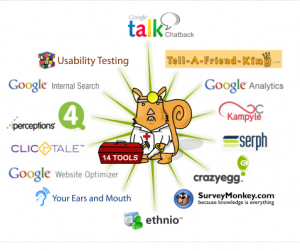The fine folks at Conversion Rate Experts have just posted a blog entry about web tools that help you learn why users abandon your site, and both B|P and Ethnio get shout-outs:
Ideally you want to interview your visitors who aren’t customers yet. That’s where Ethnio comes to the rescue…
Ethnio provides an easy way of adding a pop-up survey to your website, which asks your visitors if they’d like to participate in a usability test. You can customize the survey, so you can ask them details about themselves, such as why they visited your site and whether this is their first visit.
This is all about the pragmatic side of remote research: naturally, getting to know your users is critical for understanding why they’re leaving your site. Using a tool like Ethnio helps ensure that the people you’re talking to actually represent your users. Need a refresher course on live recruiting? I got your Ethnio right here, hombre.


